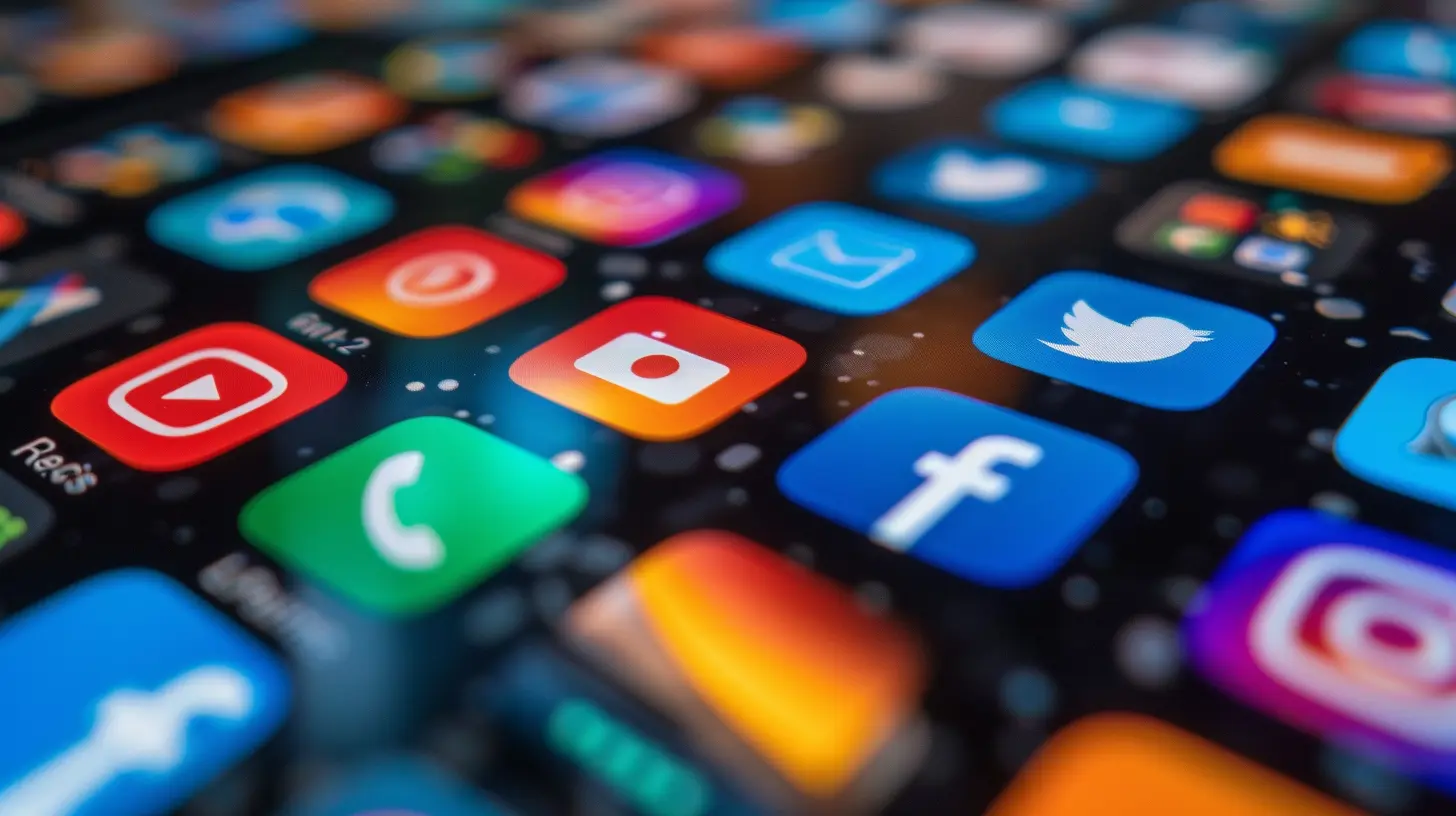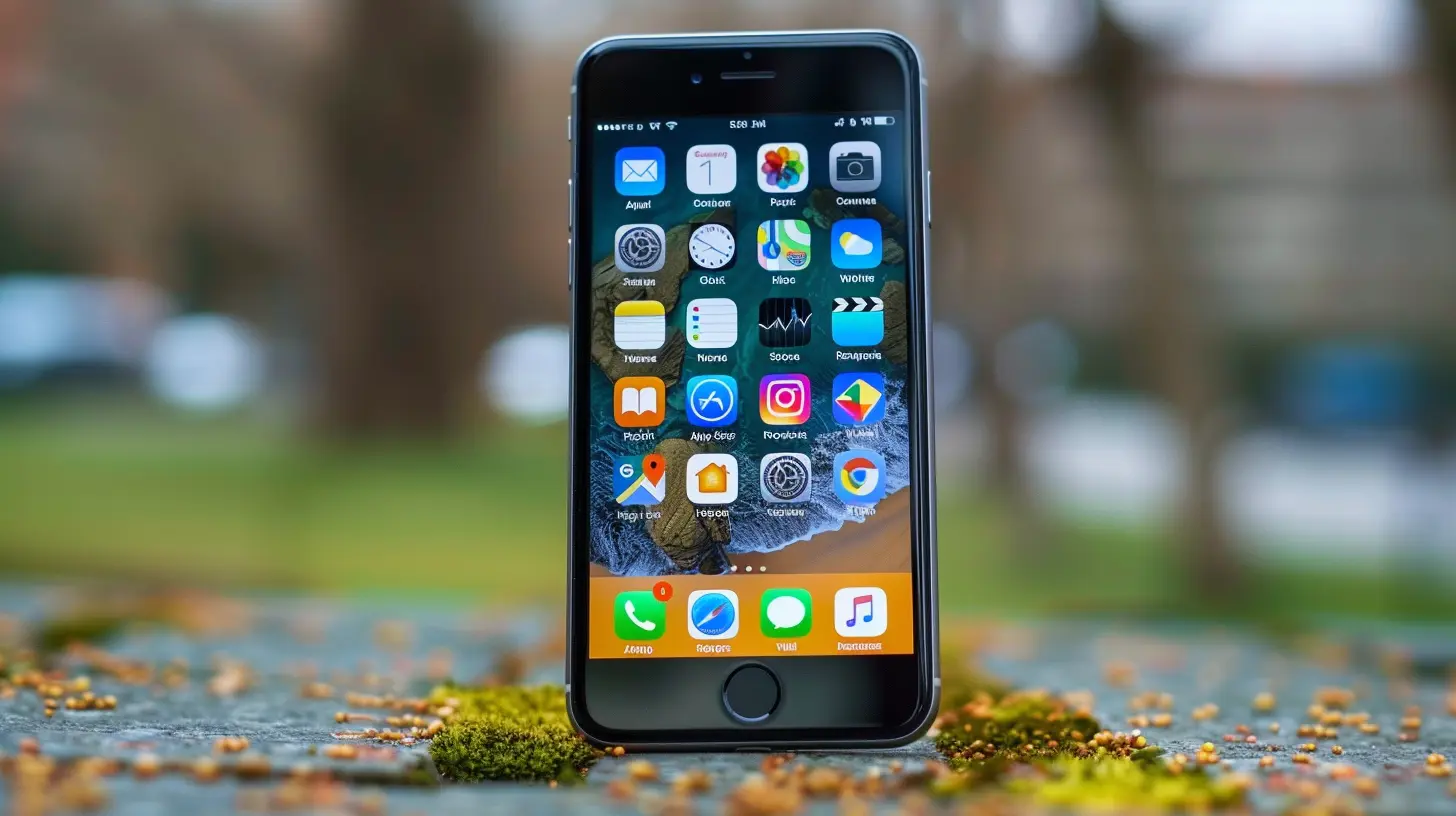Building Secure Mobile Apps: A Developer's Checklist
30 October 2025
Let’s face it — mobile apps have become the Swiss Army knife of our digital lives. From banking and shopping to fitness and social networking, there’s an app for everything. But with convenience comes responsibility, especially for developers. Security isn’t just an afterthought anymore — it’s the backbone of app development.
If you're building a mobile application, your users are literally putting their trust (and personal data) into your hands. As a developer, it’s your job to make sure that trust is never broken. Want to keep bad actors at bay and your app squeaky clean? Buckle up. Here’s your ultimate developer’s checklist for building secure mobile apps.
Why Mobile App Security Should Be Your #1 Priority
Before diving into the checklist, let’s talk about the elephant in the room — why should you even care about mobile app security?Here’s a stat to chew on: over 60% of mobile fraud stems from app vulnerabilities. That’s HUGE.
A single security flaw can lead to:
- Data breaches
- Identity theft
- Compromised financial transactions
- Damage to your brand and credibility
Still think app security is just a “nice-to-have”? Think again.
1. Start With Secure Code
You wouldn’t build your house on sand, right? So why build your app on shaky code?Writing secure code is the foundation. Poor coding practices open the floodgates to attackers. Here are a few basics:
- Always validate input — never trust user input blindly.
- Use secure coding standards for platforms like OWASP Mobile Security Top 10.
- Avoid hardcoding sensitive data like API keys and credentials.
- Regularly scan your codebase for known vulnerabilities.
Pro Tip: Use code obfuscation to make reverse-engineering a nightmare for attackers.
2. Secure Your APIs Like a Hawk
APIs are the lifeline of most mobile apps — but they can also be a hacker’s favorite playground.Here’s how you lock them down:
- Authenticate every request with OAuth2 or JSON Web Tokens (JWT).
- Use HTTPS to encrypt data in transit.
- Limit data exposure by following the principle of least privilege.
- Throttle requests to prevent brute-force attacks.
APIs should be treated like the vault door in a bank — solid, guarded, and nearly impenetrable.
3. Encrypt Data at Every Stage
Ever heard the phrase "don’t leave your doors unlocked"? Well, storing data without encryption is the digital equivalent.You'll want to:
- Encrypt data at rest and in transit.
- Use modern standards like AES-256 and TLS for encryption.
- Avoid storing sensitive user data unless absolutely necessary.
Bonus Hack: For Android, consider using the Android Keystore; for iOS, look into the iOS Keychain. They're built to handle sensitive data with extra care.
4. Be Careful With Third-Party Libraries and SDKs
Let’s be honest — no one wants to reinvent the wheel. Third-party libraries are lifesavers… until they’re not.These can introduce vulnerabilities if:
- They’re outdated
- Poorly maintained
- Developed by unknown entities
Make it a habit to:
- Audit every third-party library.
- Use tools like Snyk or OWASP Dependency-Check.
- Keep everything up to date.
It’s like inviting someone into your home — you want to know who they are before giving them a spare key.
5. Implement Proper Authentication and Authorization
Weak authentication is like using a padlock on a bank vault — it won’t cut it.Here's what solid authentication looks like:
- Enforce strong passwords (maybe even multi-factor authentication).
- Use biometric authentication where applicable (think fingerprint or Face ID).
- Set session timeouts, especially on sensitive pages.
- Avoid storing tokens locally without proper encryption.
Remember: not all users are who they claim to be.
6. Protect Data Storage
Your app might need to store data locally. Fair enough. But how you store that data makes all the difference.Best practices include:
- Avoid storing sensitive data unless absolutely necessary.
- Leverage encrypted storage mechanisms provided by iOS and Android.
- Never store passwords or tokens in plain text.
Quick Check: If someone steals a phone and gets access to your app’s storage, could they pull out sensitive data? If yes, fix that. Now.
7. Use Secure Communication Protocols
Communication between the app and servers needs to be airtight. Just as you’d wear a seatbelt in a race car, your app needs HTTPS.Make sure to:
- Enforce HTTPS using TLS 1.2 or above.
- Validate SSL certificates on both ends (use certificate pinning).
- Avoid using older, insecure protocols (like HTTP or TLS 1.0).
Without this, your app is just shouting secrets through a megaphone in a crowded room.
8. Handle Permissions Like a Pro
You don’t want your app to be the digital equivalent of a nosy neighbor.Only ask for permissions that are:
- Absolutely essential
- Justified by your app’s functionality
Too many permissions raise red flags for both users and app stores. Be transparent and contextual when requesting access to features like location, camera, or microphone.
9. Monitor and Log Activities Intelligently
Yes, you should track what’s happening in your app — but be smart about it.Do:
- Log access issues, failed login attempts, and API failures.
- Use logging tools that scrub sensitive data.
- Set up alerts for suspicious patterns.
Don’t:
- Log personal data or credentials.
- Leave verbose logs in your production build.
Think of it as a home security camera — it should protect, not leak information.
10. Educate Your Users (And Your Team)
Security isn't just a technical problem — it's a mindset.- Provide clear privacy policies.
- Let users know how their data is being used.
- Offer in-app guidance on creating strong passwords or recognizing phishing attempts.
Same goes for your dev team. Regular security training can turn casual coders into cyber warriors.
11. Regularly Test Your App for Vulnerabilities
This one’s a no-brainer.Before every release:
- Conduct thorough QA testing.
- Use tools like OWASP ZAP, Burp Suite, or MobSF.
- Perform penetration testing with actual ethical hackers, if possible.
Don’t just test for functionality — test for ways your app could be broken or abused.
12. Keep Your App Updated
Security is never “one and done.” Attack vectors evolve, and so must your defense.Stay on top of:
- Platform OS updates (Android and iOS)
- Library and SDK patches
- Security advisories from vendors
Push regular updates with security fixes. A stale app is usually a vulnerable app.
13. Plan for the Worst: Incident Response
Even with all precautions, breaches happen. What then?Have an incident response plan ready:
- Map out steps for breach detection, containment, and notification.
- Know the legal requirements for reporting breaches in your region.
- Offer updates and reassurance to affected users.
Being reactive doesn’t mean you’ve failed — it means you’re prepared.
14. Leverage Platform-Specific Security Features
Each mobile platform comes with its security toolkit. Use it.For Android:
- Use SafetyNet to verify device integrity.
- Enable Play Protect policies.
For iOS:
- Use App Transport Security (ATS).
- Integrate with Apple’s secure enclave for storing sensitive data.
Why reinvent the wheel when the platforms give you armored tires?
15. Don't Forget the Backend
Your app security is only as strong as its backend. Imagine putting a high-security lock on a cardboard door — not very helpful, is it?So:
- Secure your servers with firewalls and intrusion detection.
- Use well-secured databases.
- Keep access to backend services tightly controlled.
The mobile app might be the storefront, but the backend is the vault. Defend it accordingly.
Conclusion: Security Is a Continuous Journey
Building a secure mobile app isn't just about checking boxes. It's about creating a culture of security — one that values privacy, proactive thinking, and accountability.No app is hack-proof, but with this checklist, you’re miles ahead of those who still see security as an afterthought.
So the next time you code, pause and ask: “If I were a hacker, where would I strike first?” Thinking like the enemy might just be your best defense.
all images in this post were generated using AI tools
Category:
App DevelopmentAuthor:

Kira Sanders
Discussion
rate this article
1 comments
Fatima Rodriguez
Great article! I appreciate the thorough checklist for securing mobile apps. It might also be beneficial to include tips on conducting regular security audits and staying updated with the latest vulnerabilities, as mobile security is an ever-evolving field. Thanks for sharing!
October 30, 2025 at 5:08 AM

Kira Sanders
Thank you for your feedback! I appreciate your suggestions on including regular security audits and staying updated on vulnerabilities—great points for enhancing mobile app security!


